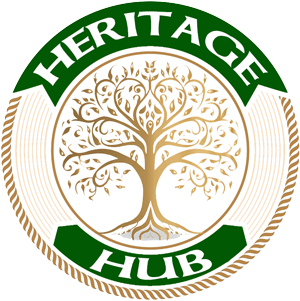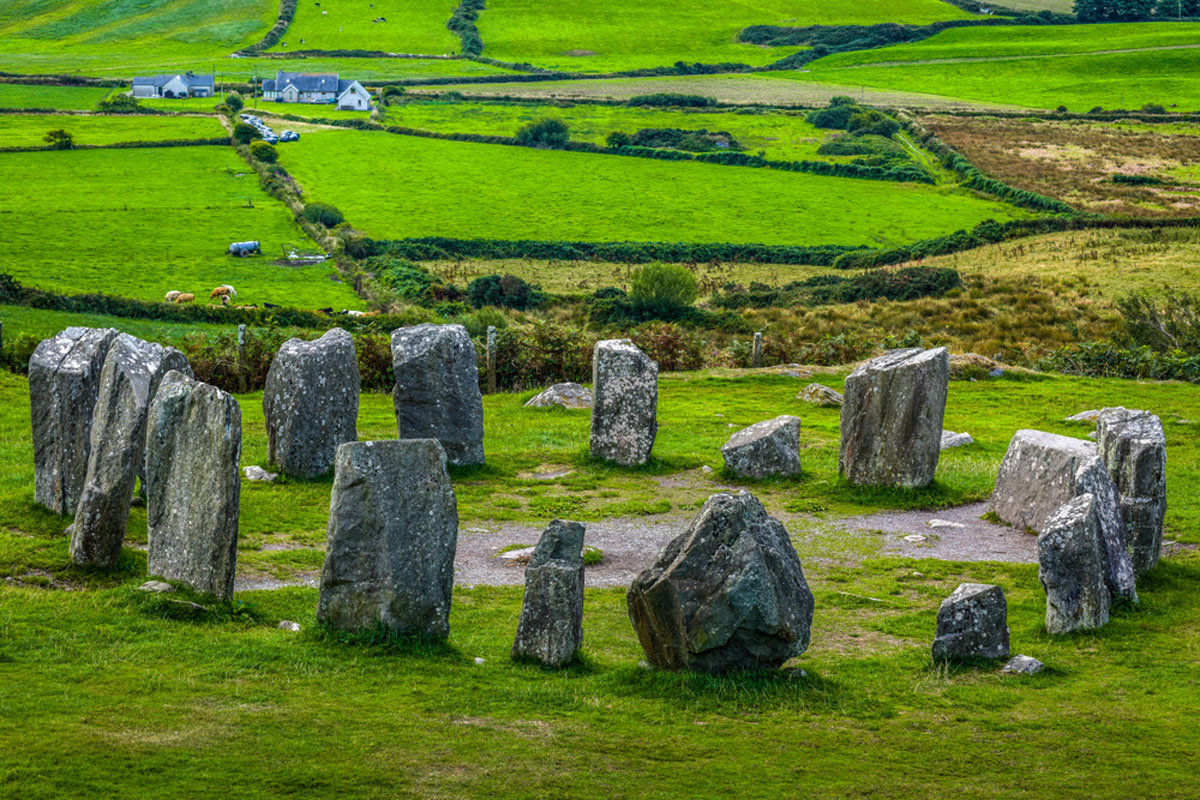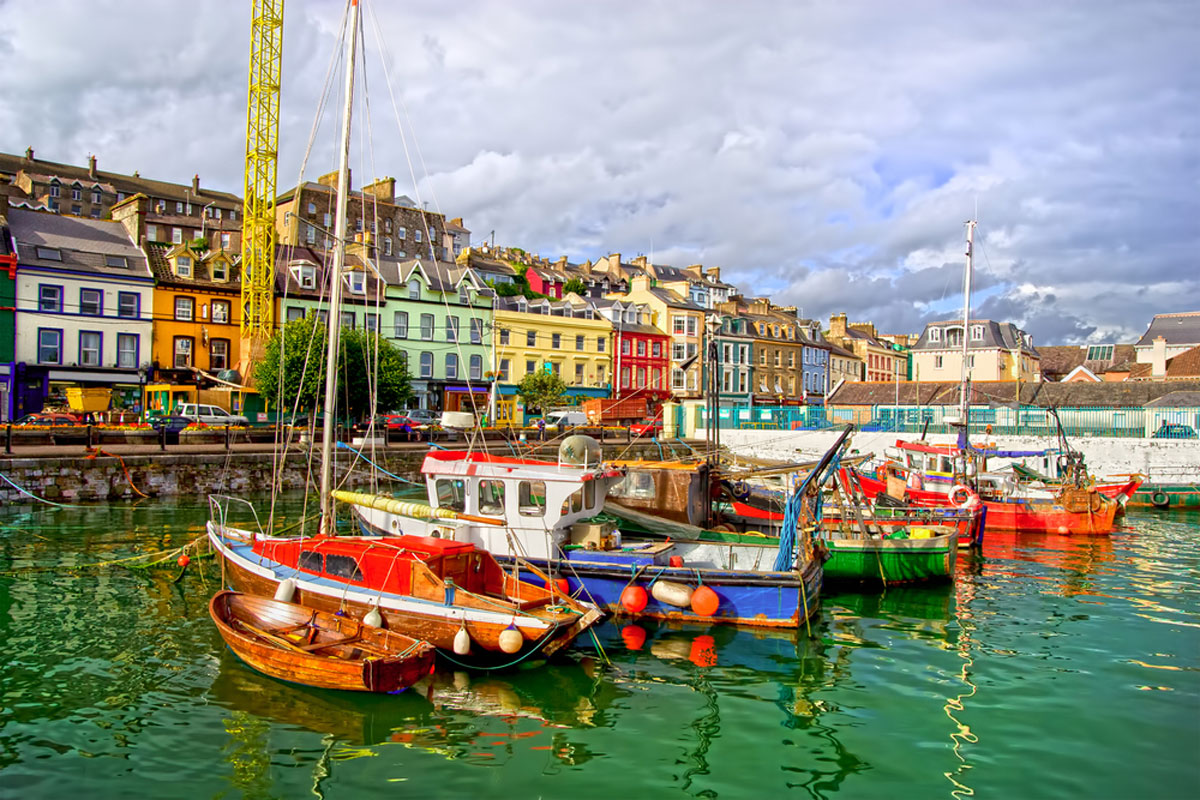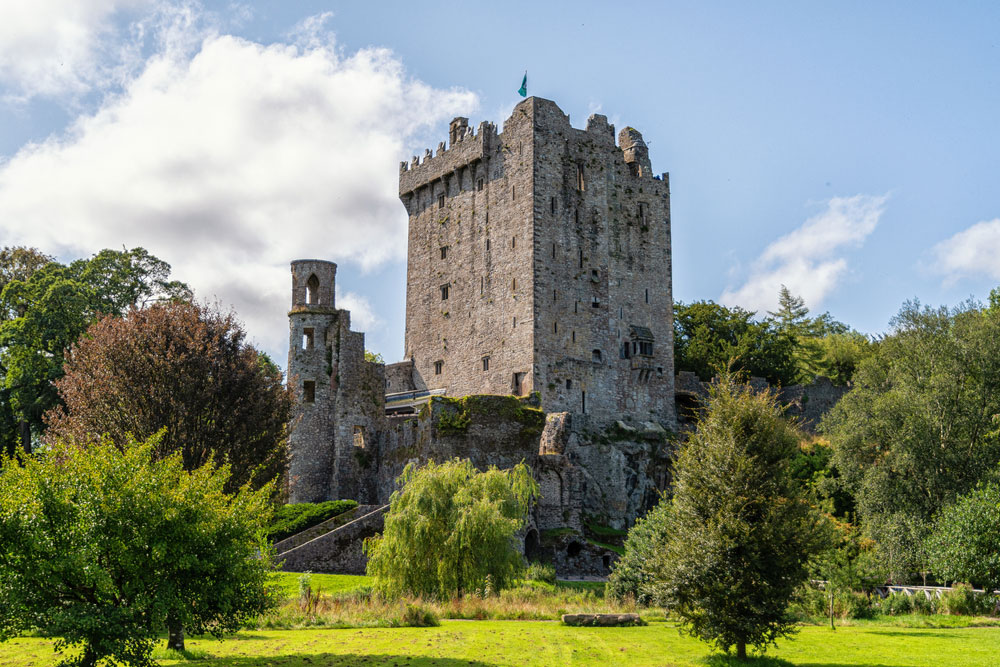Introduction and Historical Significance
Nestled on the rugged landscape of West Cork, the Drombeg Stone Circle stands as one of Ireland’s most captivating ancient sites. Often referred to as “The Druid’s Altar,” this megalithic structure offers a glimpse into the rich tapestry of Ireland’s prehistoric past. With its 17 stones arranged in a near-perfect circle, Drombeg is not just a testament to the ancient builders’ ingenuity, but also to their profound connection with the celestial world.
Dating back to the Bronze Age (approximately 1100–800 BC), Drombeg holds deep historical significance. Like many other stone circles across Ireland and the British Isles, it was likely used for ceremonial purposes. The exact nature of these rituals remains a mystery, yet the alignment of the stones with the setting sun on the winter solstice suggests a spiritual connection to the rhythms of the cosmos. Such astronomical alignments are not uncommon in ancient Celtic sites, pointing to a society highly attuned to the cycles of nature.
Archaeological Discoveries and Layout
The Drombeg Stone Circle, while awe-inspiring on the surface, has yielded significant archaeological findings that provide insight into the daily lives and beliefs of the people who constructed it. Excavations at the site in the 1950s revealed important details about its layout and use, deepening our understanding of its purpose and the rituals associated with it.
The stone circle is made up of 17 standing stones, 13 of which still stand in their original position. It spans roughly 9 meters in diameter, and at the southwest, two tall, portal stones frame the view towards the focal point of the monument—a flat recumbent stone on the opposite side of the circle. This stone, known as the axial stone, is key to Drombeg’s alignment with the winter solstice. On December 21st, the shortest day of the year, the sun sets directly over the axial stone, creating a spectacular alignment that suggests the site was designed with celestial events in mind.
Beyond the circle itself, excavations unearthed a fulacht fiadh (ancient cooking pit) nearby, where water was heated by stones placed in a trough. This discovery provides clues about the practical aspects of life for the people who lived around Drombeg. It is believed that the fulacht fiadh may have been used in conjunction with rituals conducted at the stone circle, perhaps as part of feasting or other ceremonial activities.
The alignment of the stones, combined with these archaeological findings, paints a picture of a community deeply connected to both the natural and spiritual worlds. In the next part, we will explore the folklore and myths surrounding the Drombeg Stone Circle, revealing how ancient and modern stories have intertwined to create the enduring mystique of this sacred site.
Folklore and Legends
The Drombeg Stone Circle is not only an archaeological marvel but also a site steeped in folklore and legend. These stories, passed down through generations, weave a rich tapestry of mysticism and ancient beliefs, contributing to the circle’s enduring allure.
Local legends often describe the stone circle as a place of magical significance. One prominent tale speaks of a group of druids who used the site for powerful rituals. According to this legend, the stones were magically transported from another part of Ireland by the druids themselves. This enchanting narrative highlights the circle’s association with ancient wisdom and mystical practices, reflecting the belief that the stones possess supernatural powers.
Another fascinating legend involves a fairy queen and her court. It is said that the stones were once living beings, transformed into rock by a spell cast by the fairy queen. This tale underscores the deep connection between the landscape and the supernatural in Irish folklore, suggesting that the stones are not just physical artifacts but also symbols of an otherworldly realm.
The stories surrounding Drombeg extend beyond its immediate vicinity. Some folklore connects the circle with other megalithic sites across Ireland, suggesting a network of sacred places linked by ancient rites and cosmic alignments. This network is thought to have facilitated communication between different communities, bound together by shared beliefs and astronomical knowledge.
In modern times, the Drombeg Stone Circle continues to inspire a sense of wonder and reverence. Visitors and locals alike are drawn to its mystical aura, and the stories of druids, fairies, and ancient rites persist as a testament to the site’s enduring significance.
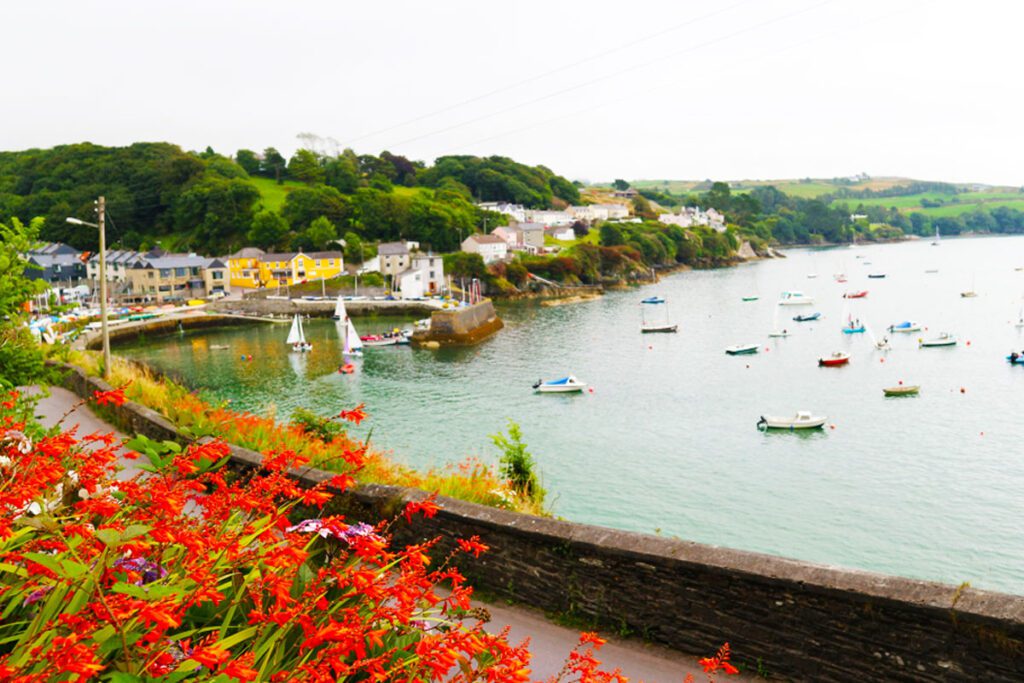
The Role in Contemporary Culture and Tourism
Today, the Drombeg Stone Circle stands as a prominent landmark in Ireland’s rich tapestry of historical and cultural sites. Its appeal extends beyond academics and archaeologists to capture the imagination of tourists, spiritual seekers, and those fascinated by ancient history.
As a major tourist attraction, Drombeg draws visitors from around the globe. The site is easily accessible, located just a short distance from the picturesque village of Glandore in West Cork. Its scenic setting amidst rolling hills and lush greenery enhances its allure, offering a tranquil escape into Ireland’s ancient past. Visitors often come to marvel at the stone circle’s architectural precision and to experience the serene atmosphere that envelops the site.
The significance of Drombeg goes beyond mere sightseeing. For many, the stone circle serves as a place of personal reflection and connection with the past. The alignment with the winter solstice continues to captivate those interested in astronomy and ancient rituals. Each year, enthusiasts gather at Drombeg during the solstice to witness the sunset alignment, a modern-day ritual that echoes the ancient practices of its builders.
Moreover, Drombeg has become a cultural touchstone in Ireland, frequently featured in literature, art, and media. Its image symbolizes a link to Ireland’s ancient heritage, evoking a sense of mystery and reverence. Local craftspeople and artists often draw inspiration from the site, incorporating its motifs into their work, which helps keep the legacy of the stone circle alive in contemporary culture.
In addition to its cultural and spiritual significance, Drombeg contributes to the local economy through tourism. The influx of visitors supports local businesses and helps preserve the site through conservation efforts. This blend of historical interest and economic impact highlights the importance of maintaining and celebrating such ancient sites.
Preservation, Future Research, and Lasting Legacy
As a cherished historical site, the Drombeg Stone Circle faces the ongoing challenge of preservation to ensure that its legacy endures for future generations. Efforts to maintain and protect the site are crucial in preserving its structural integrity and historical significance.
Preservation Efforts
The preservation of Drombeg involves careful monitoring and maintenance to protect it from environmental wear and human impact. Measures include regular inspections of the stones and surrounding area to address any signs of deterioration. Conservationists also work to manage visitor access to minimize physical damage and to educate the public on the importance of respecting the site.
In recent years, there have been initiatives to enhance the site’s educational resources. Information panels and guided tours help visitors understand the historical context and significance of the stone circle. These efforts aim to foster a deeper appreciation and respect for the monument, encouraging responsible tourism.
Future Research
Ongoing archaeological research continues to shed light on the mysteries of Drombeg. New techniques in ground-penetrating radar and other non-invasive methods offer the potential to uncover additional information about the site’s construction and use. Researchers are also exploring connections between Drombeg and other megalithic sites across Ireland to build a more comprehensive understanding of ancient ceremonial practices.
The study of ancient astronomical alignments remains a key area of interest. Researchers are examining the precision of the stone circle’s alignment with celestial events to gain insights into the astronomical knowledge and practices of its builders. Such studies not only enhance our understanding of Drombeg but also contribute to the broader field of prehistoric astronomy.
Lasting Legacy
The Drombeg Stone Circle remains a powerful symbol of Ireland’s ancient heritage. Its mystique and historical significance continue to inspire both scholarly study and public fascination. The site serves as a testament to the ingenuity and spiritual depth of its creators, connecting contemporary audiences with their distant ancestors.
As we look to the future, the Drombeg Stone Circle will undoubtedly continue to be a focal point for exploration, education, and reflection. Its preservation and ongoing research will ensure that this mystical monument remains a vibrant link to Ireland’s past, enriching our understanding of ancient cultures and their enduring legacies.
Natural Attractions
- Blarney Castle and Gardens – Famous for the Blarney Stone, said to grant the gift of eloquence to those who kiss it.
- Gougane Barra Forest Park – A tranquil park with forest trails, a serene lake, and a historic chapel.
- Mizen Head – Ireland’s most southwesterly point with dramatic cliffs and a signal station.
- Ballycotton Cliff Walk – A scenic coastal trail with stunning views of the Atlantic.
- Garinish Island – A beautiful island with subtropical gardens accessible by ferry from Glengarriff.
Historical and Cultural Sites
- Cobh Heritage Centre – Explore Ireland’s emigration history and the story of the Titanic’s last port of call.
- Jameson Distillery Midleton – Learn about the art of whiskey-making and enjoy a guided tasting.
- Charles Fort – A well-preserved 17th-century star-shaped fort overlooking Kinsale Harbour.
- Blackrock Castle Observatory – A historic castle housing an interactive science and astronomy center.
- Elizabeth Fort – A 17th-century fort offering panoramic views of Cork City.
Lakes and Water Activities
- Lough Hyne – A saltwater lake perfect for kayaking, snorkeling, and stargazing.
- Inchydoney Beach – A pristine beach ideal for swimming, surfing, and relaxing.
- The River Lee – A picturesque river that flows through Cork City, offering opportunities for boating and walking.
- Bantry Bay – Known for sailing, fishing, and exploring nearby islands.
Scenic Drives and Villages
- Kinsale – A charming coastal town known for its gourmet food, colorful streets, and maritime history.
- Baltimore – A picturesque village offering ferry access to the islands of Roaringwater Bay.
- Clonakilty – Renowned for its vibrant music scene, colorful buildings, and Michael Collins Centre.
- Beara Peninsula – A scenic drive with rugged landscapes, colorful villages, and the Healy Pass.
Unique Experiences
- Spike Island – Once a monastery, fortress, and prison, now a fascinating tourist attraction.
- Fota Wildlife Park – A family-friendly park with free-roaming animals and educational exhibits.
- The English Market – A historic covered market in Cork City offering local produce and artisan foods.
- Dursey Island – Accessible via Ireland’s only cable car, known for its walking trails and unspoiled beauty.
- Sheep’s Head Way – A peaceful walking trail with spectacular coastal views and quaint villages.
County Cork is a treasure trove of natural wonders, historical landmarks, and cultural experiences, making it a captivating destination for all visitors.
Helpful Resources


